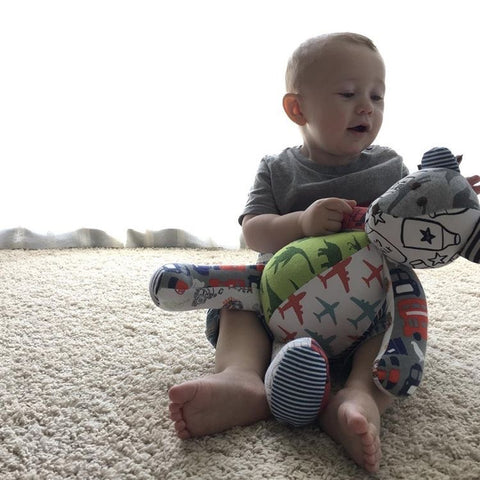We know that teddy bears are comforting... now new research provides some insight.
A study conducted in France during European Researchers’ Night aimed to identify the characteristics of teddy bears that contribute to their comforting nature. The researchers focused on visual, olfactory, and tactile properties, but found that the emotional bond with the teddy bear is the primary factor determining its comforting power. *
This study was done using basic teddy bears- imagine the comfort power of a teddy bear made from YOUR OWN CLOTHES. A Memory Bear.
CLICK HERE to learn how to have a memory bear made from your clothing
(scroll to read more...)
Originating in the early 20th century, teddy bears have become beloved comfort objects and collectibles for both children and adults. These bears, often given as gifts to convey affection or provide comfort, are available in a wide range of sizes, colors, and styles.
The term “teddy bear” is thought to have been coined from a 1902 cartoon titled “Drawing the Line in Mississippi,” published in the Washington Post, which depicted President Theodore “Teddy” Roosevelt refusing to shoot a tethered baby black bear. Following the cartoon’s publication, a handmade stuffed bear was created and quickly sold out, sparking a surge in the production of “Teddy’s Bears” in the U.S. Over time, “Teddy’s Bears” were simply called “teddy bears,” and they gained popularity as toys worldwide.
Study author Anne-Sophie Tribot and her colleagues argued that examining the origins of teddy bears’ comforting powers is a legitimate scientific endeavor. Countless children around the globe find solace in teddy bears, using them to navigate emotions and feel secure. The researchers aimed to determine if specific physical or sensory characteristics enhance a teddy bear’s ability to comfort.
The study included 395 individuals taking part in a participatory study conducted during the European Researchers’ Night. This annual Europe-wide event, which is funded by the Marie Skłodowska-Curie Actions of the EU, allows researchers to organize educational and entertainment activities highlighting the diversity of science and its impact on citizens’ daily lives.
Participants in general found their own teddy bears to be much more comforting that teddy bears belonging to other people or the standard teddy bears provided by the researchers.
“In conclusion, the comforting power of teddy bears lies firstly in the emotional bonds (observed through ownership effect), and secondly in a combination of visual, olfactory, and especially kinesthetic characteristics,” the study authors wrote.
The paper, “What makes a teddy bear comforting? A participatory study reveals the prevalence of sensory characteristics and emotional bonds in the perception of comforting teddy bears,” was authored by Anne-Sophie Tribot, Nathalie Blanc, Thierry Brassac, François Guilhaumon, Nicolas Casajus, and Nicolas Mouquet.
*Excerpts taken from this article from psypost.com
The original paper was published in the Journal of Positive Psychology.






